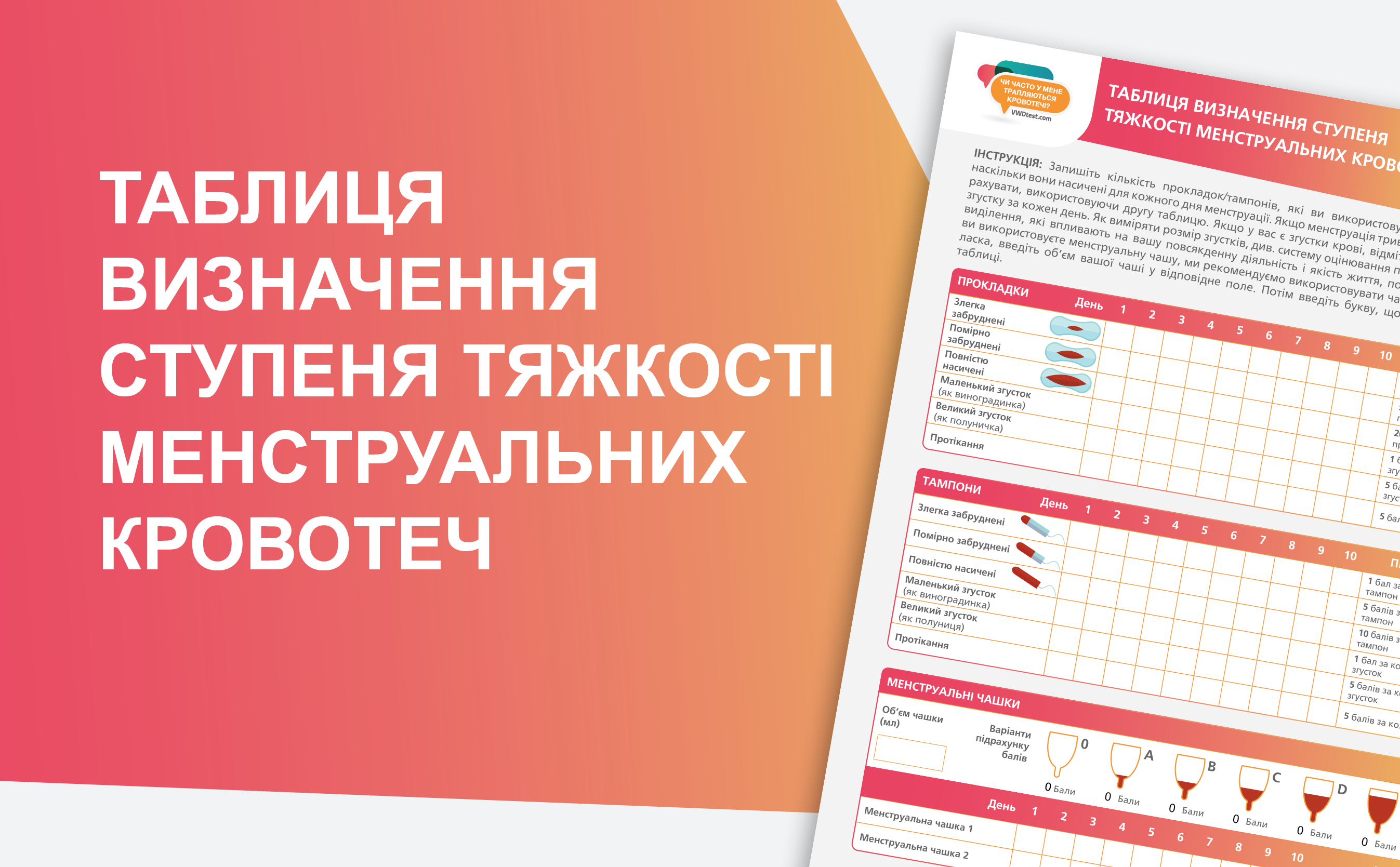
ДОДАТКОВІ МАТЕРІАЛИ ДЛЯ ПАЦІЄНТІВ
Хвороба фон Віллебранда (ХВ) — рідкісне захворювання, але до сих пір тисячі людей живуть з цим станом у всьому світі. Тут ви можете дізнатися більше про ХВ, переглянувши історії реальних пацієнтів і дізнатися про їхній досвід лікування.
Якщо у вас спостерігаються симптоми кровотечі, ми рекомендуємо переглянути наші корисні ресурси, де ви знайдете прості інструменти, які допоможуть вам дізнатися більше про кровотечу. Ці інструменти включають онлайн-тест тест на кровотечу та просту у використанні карту оцінки менструальних кровотеч яка допоможе вам дізнатися, чи нормальна ваша кровотеча чи ні. Це займе всього 5 хвилин, але може змінити ваше життя!
Якщо вам нещодавно поставили діагноз ХВ, можливо, вам варто пошукати контакти найближчих клінік або пацієнтської організації. Щоб дізнатися більше про варіанти лікування, планування сім’ї з ХВ, операцію та можливі наслідки для вашого психічного здоров’я, ознайомтеся з розділом Життя з ХВ.

Про що б ви хотіли дізнатися?
Оберіть опцію нижче:











I understand that you’re looking to get the post ID in WordPress. In WordPress, each post has a unique post ID associated with it. You can retrieve the post ID using various methods, depending on the context in which you’re working. Here are a few ways to get the post ID in WordPress:

His mother reported a history of heavy menstrual periods and taking iron supplements for severe anaemia. The patient’s grandmother and maternal aunts also had heavy periods. The paediatrician ordered screening laboratory tests for the patient, including an activated partial thromboplastin time and prothrombin time, both of which returned normal results. A complete blood count revealed low haemoglobin (9.8 g/dL) associated with a low mean corpuscular volume at 69 fL, suggestive of iron deficiency anaemia. The patient was referred to a haematologist for further evaluation.
Due to the presence of the above bleeding symptoms and family history that were compatible with a bleeding disorder, a von Willebrand panel was ordered. The results showed low VWF activity (41%), borderline low VWF and coagulation factor VIII protein levels (50% and 52%, respectively), along with normal VWF multimer pattern and distribution. These results supported the diagnosis of mild type 1 VWD.


His mother reported a history of heavy menstrual periods and taking iron supplements for severe anaemia. The patient’s grandmother and maternal aunts also had heavy periods. The paediatrician ordered screening laboratory tests for the patient, including an activated partial thromboplastin time and prothrombin time, both of which returned normal results. A complete blood count revealed low haemoglobin (9.8 g/dL) associated with a low mean corpuscular volume at 69 fL, suggestive of iron deficiency anaemia. The patient was referred to a haematologist for further evaluation.
Due to the presence of the above bleeding symptoms and family history that were compatible with a bleeding disorder, a von Willebrand panel was ordered. The results showed low VWF activity (41%), borderline low VWF and coagulation factor VIII protein levels (50% and 52%, respectively), along with normal VWF multimer pattern and distribution. These results supported the diagnosis of mild type 1 VWD.

His mother reported a history of heavy menstrual periods and taking iron supplements for severe anaemia. The patient’s grandmother and maternal aunts also had heavy periods. The paediatrician ordered screening laboratory tests for the patient, including an activated partial thromboplastin time and prothrombin time, both of which returned normal results. A complete blood count revealed low haemoglobin (9.8 g/dL) associated with a low mean corpuscular volume at 69 fL, suggestive of iron deficiency anaemia. The patient was referred to a haematologist for further evaluation.
Due to the presence of the above bleeding symptoms and family history that were compatible with a bleeding disorder, a von Willebrand panel was ordered. The results showed low VWF activity (41%), borderline low VWF and coagulation factor VIII protein levels (50% and 52%, respectively), along with normal VWF multimer pattern and distribution. These results supported the diagnosis of mild type 1 VWD.










